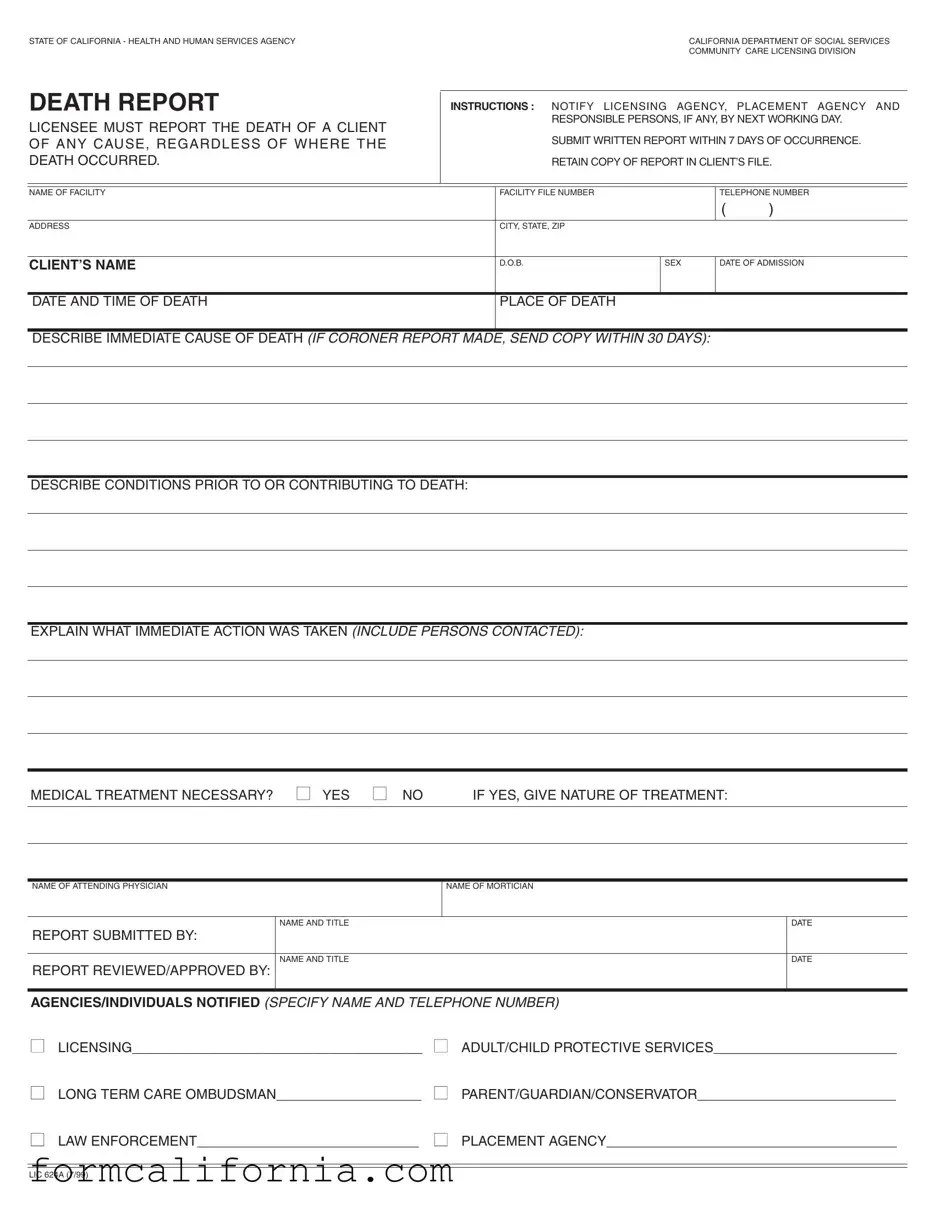The California Death Report form shares similarities with a Birth Certificate. Both documents serve as official records maintained by state agencies, documenting critical life events. Like the Death Report, a Birth Certificate includes personal identifiers (name, sex, date of birth), relevant dates (of birth for Birth Certificates and of death for the Death Report), and data regarding the location of the event (place of birth/death). However, while a Death Report focuses on the end of life, including causes and conditions leading to death, a Birth Certificate records the commencement of life, capturing details pertinent to the birth.
Comparable to an Autopsy Report, the California Death Report form encompasses details about a person’s death, including the time, place, and immediate causes. An Autopsy Report delves deeper into the cause of death through examination, providing insights that might not be immediately apparent, similar to the Death Report's section on conditions contributing to death. Both documents play a vital part in health statistics and legal matters, helping to clarify circumstances surrounding a death.
Similar to an Incident Report filed in healthcare facilities, the California Death Report form includes documentation of an event (in this case, a death) and the immediate actions taken in response. Like Incident Reports, which detail accidents or unexpected events within a facility, the Death Report requires information on how the situation was handled, including medical treatment and notification of responsible parties. Both forms are crucial for compliance and risk management within care settings.
An Advance Directive is another document that, like the California Death N/Aeport form, deals with the circumstances surrounding an individual’s health and end-of-life decisions. While an Advance Directive outlines a person’s preferences for treatment and care in anticipation of incapacitation, the Death Report documents what occurred at life’s end, including treatments administered. Each serves to ensure that an individual’s health care preferences are respected, albeit at different stages of care.
The Patient's Medical Record, which chronicles an individual's medical history, treatments received, and outcomes, bears resemblance to the sections of the California Death Report form detailing medical conditions and treatments prior to death. Both documents are fundamental to understanding the health trajectory leading to the patient's current status or, in the case of the Death Report, the cause of death. This similarity highlights their roles in ensuring continuity and quality of care.
Police Reports, like the California Death Report form, document specific events - in the former's case, crimes or incidents involving law enforcement. Both forms include factual accounts of what happened, individuals involved, and actions taken immediately following the event. While Police Reports may cover a wide range of incidents, the Death Report is specifically focused on the details and circumstances of an individual’s death, including any law enforcement notification.
The Obituary, a publicly shared announcement of someone's death, shares a common purpose with the California Death Report form in notifying relevant parties about a death. While an Obituary typically includes a brief biography, surviving family members, and funeral arrangements, the Death Report provides detailed official records of the death, including medical and administrative details. Both serve to inform and document, but from different perspectives and for varied audiences.

